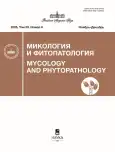A total of 57 basidiomycete species from Agaricomycetes and Dacrymycetes have been recorded for the first time from 26 administrative regions of Russia: Republic of Crimea (1 species), Republic of Mari El (1), Republic of Mordovia (1), Republic of Tyva (3), Krasnoyarsk Krai (1), Perm Krai (2), Primorsky Krai (1), Arkhangelsk Oblast (4), Bryansk Oblast (1), Irkutsk Oblast (1), Kaliningrad Oblast (2), Leningrad Oblast (3), Moscow Oblast (2), Murmansk Oblast (3), Nizhny Novgorod Oblast (1), Novgorod Oblast (2), Novosibirsk Oblast (1), Ryazan Oblast (15), Sverdlovsk Oblast (1), Tula Oblast (1), Tyumen Oblast (6), Vladimir Oblast (6), Volgograd Oblast (1), Saint Petersburg (1), Khanty-Mansi Autonomous Okrug (3), and Yamalo-Nenets Autonomous Okrug (1 species). An annotated species list containing the data on locality, substrate, habitat type, date of collection, and voucher numbers is provided. Cortinarius incisior and Cystoagaricus lepidotoides are reported as the first records in Russia. Mycenella trachyspora and Mycoacia nothofagi are recorded in Russia for the second time. Simultaneously, Mycenella trachyspora is listed based on basidiomata findings revealed for the first time in Russia. Pluteus fuscodiscus and Suillus glandulosus are reported for the third time. New data on rare and little-collected species Albatrellus subrubescens, Ceriporia septocystidia, Gamundia striatula, Suillus aurihymenius, and Xerocomellus fennicus is presented. Complete sequences of ITS1– 5.8S– ITS2 nuclear ribosomal DNA for seven species (Antrodiella faginea, Cystoagaricus lepidotoides, Irpex latemarginatus, Kneiffiella abdita, Mycenella trachyspora, Mycoacia nothofagi, Pluteus fuscodiscus) reported have been generated and submitted to the GenBank database.
 461-471
461-471


 472-476
472-476


 477-481
477-481


 482-492
482-492


 493-507
493-507


 508-518
508-518


 519-528
519-528


 529-537
529-537


 538-547
538-547


 548-552
548-552











